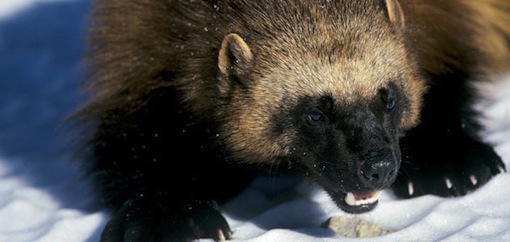
Wolverine. Photo: US Fish and Wildlife Service
Wolverines are very reclusive animals, so when a wolverine family was caught on video cajoling in Montana’s Sapphire Mountains this summer it was an opportunity to reflect on what it will take to keep this imperiled native species from going extinct.
Like Montana, Idaho is lucky to still have wolverines, as well as most of the species that were here when Lewis and Clark traveled through the area over two hundred years ago. It’s worth noting that the Sapphire Mountains are currently protected as a Wilderness Study Area, which calls into question the recent efforts by the Trump administration and Congress to remove Wilderness Study Areas and open millions of acres of federal lands to industrial development and resource extraction. It also confirms the scientifically-documented need for large and connected wildlands if we want to keep wolverines and other threatened and endangered species around for future generations.
The wolverine story
Wolverines once thrived throughout the West, although now only an estimated 250 to 300 wolverines survive in remote areas of Idaho, Montana, Wyoming, Oregon and Washington.
Wolverines need both secure habitat and deep winter snowpack to den, give birth, and store food for their young. As the earth warms and winter snowpack shrinks, wolverines have less breeding success.
The U.S. Fish and Wildlife Service declined to list wolverines as a threatened or endangered species in 2014 claiming they’re so elusive that actual population numbers are uncertain.
The Alliance for the Wild Rockies filed a lawsuit with several other conservation groups and in 2016 a Federal District Court issued a stinging ruling that reversed the decision by the U.S. Fish and Wildlife Service to keep wolverines off the Endangered Species List.
The court found that the agency not only ignored the best available science in the face of undeniable climate change, it also manipulated existing data for purely political reasons. The court forced the agency to reconsider wolverines for listing and Idaho’s Department of Fish and Game is now working with other states in the Northern Rockies using remote cameras to document wolverines in wilderness and roadless parts of Idaho.
But for wolverines to survive over the long run, we need to protect their secure habitat as well as fight global warming. This is exactly what the Northern Rockies Ecosystem Protection Act is designed to accomplish.
The Northern Rockies Ecosystem Protection Act (NREPA) is now before Congress as H.R. 2135 in the House and S. 936 in the Senate. NREPA is a grassroots bill written by scientists and citizens from the Northern Rockies including Idaho’s own Gary Macfarlane and Montana’s Dr. John Craighead, who was named as one of the “top 100 scientists of the 20th century” by National Geographic.
NREPA not only protects existing wildlands habitat, but fights climate change by keeping carbon-sequestering forests intact. National Forests absorb an astounding 10 percent of the carbon that America generates with unlogged and old growth forests absorbing the most carbon. Recent studies have also found that logging in states such as Oregon, releases more carbon than all of their cars and trucks combined.
The Trump administration and Republicans in Congress are currently trying to gut the Endangered Species Act. Now’s the time to join us in standing up for our public lands and fighting to preserve native species for future generations. Please take a moment to contact Idaho’s Congressional delegation and ask them to support NREPA and oppose bills to eliminate existing Wilderness Study Areas and weaken the Endangered Species Act.